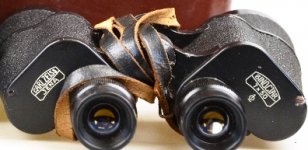This was used in the waning days of the DDR as a marketing gimmick.
It purportedly identifies the glass as being of first quality, 'erste Qualitaet', a German figure of speech meaning top notch. That Zeiss itself had been founded on the premise of nothing but the best, enforced by old Carl's ball peen hammer quality control, was not relevant to the apparatchiks running the shop.
In the event, the entire output was so labeled, so the symbol lost any meaning very quickly. If this reminds some readers of 'zero defects', 'six sigma' or similar management spleens of recent years, the thought process leading to this is quite identical.





